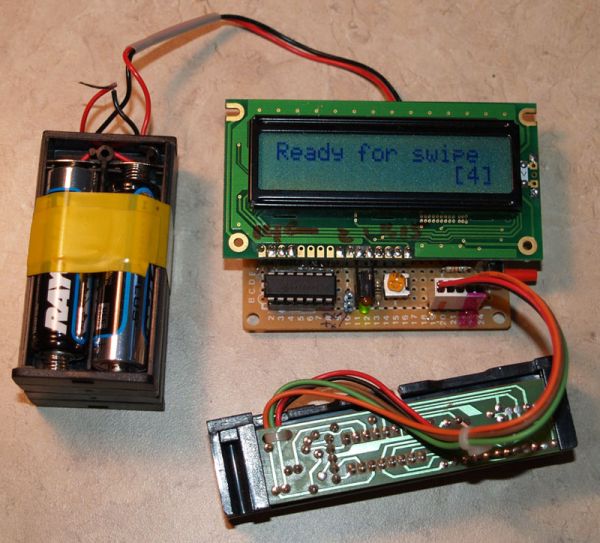- Play with the MagTek reader
- Try out an efficient LCD interface for use with a PIC microprocessor
I got my reader for less than five bucks from All Electronics. All the parts combined are under $20.
Here’s a shot of the completed project:
Software
For programming, I use the MCP-USB from Olimex. I got it from SparkFun, and I highly recommend their getting started document. It’s fully compatible with MPLAB, and I’ve never had problems with it. I cut a hole so I could just leave my programmer right in the its original box. Here it is with the 16F688 chip I used for this project.I’m using a MagTek brand TTL card reader, which has a pretty generic serial interface. The actual bits are sent using a typical data/clock pair, and there’s a “card present” line to let you know when to start paying attention. This diagram from the data sheet shows all three interface lines in action:
For more detail: HandySwipe portable magnetic card reader using PIC16F688

